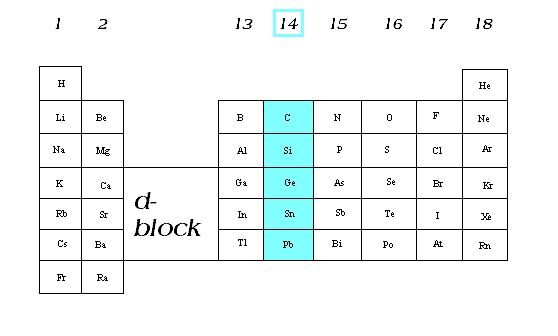GROUP 14: TIN AND LEAD
The elements
Tin and lead depict some resemblance to the lighter elements in group 14, particularly Ge. Even though they are definitely more metallic in their physical and chemical characteristics, simple cationic the chemistry is exception rather than the rule. Like with group 13, two states of oxidation MII and MIV are found, and the more stable form is MII for lead.

Both elements contain rather low abundance, but are common than other heavy metals. They take place in the minerals cassiterite SnO2 and galena PbS. They each have various stable isotopes, Sn more than any other element (10). A number of Pb isotopes are derived from the uranium's and thorium's radioactive decay. The isotopic composition of Pb (and so its atomic mass) changes detectably as per the source, and such type of variations have been employed to estimate the age of the Earth and of rocks.
The elements are readily generated through reduction of their ores and are soft, low-melting, rather unreactive metals. Tin is employed for plating, and both elements in low-melting alloys (example solder) and as several compounds. Though, applications of lead are declining as its compounds are extremely toxic. A continuing main use is in lead acid batteries that rely on two reactions including the Pb0, PbII and PbIV states:
.png)
.png)
Taking place at different electrodes, these provide a cell potential of 2 V, larger than can be obtained simply from any other pair of electrode reactions in aqueous solution.